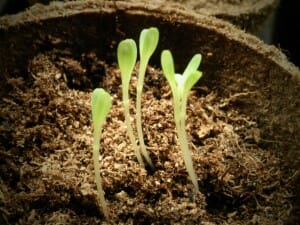For Robust Plant Growth Use the Right Temperatures

In order to grow properly, plants need proper humidity, temperature, and light. Too little or too much of any of these elements could mean overly stressed plants and lower yields. Here, we discuss the right temperature levels for different situations.
Why is temperature important?
You need different temperatures for different growth stages and situations. Proper temperatures are important because they affect how fast your plants will turn carbon dioxide, light and water into food – the process of photosynthesis. Incorrect temperatures can cause photosynthesis to be inefficient and could result in poor plant growth and yields.
The right temperature at the right time
Assuming the grow room is well-ventilated, temperatures should stay roughly between 75 and 80°F in general, with slight changes based upon the following variables:
• With lights on
Cuttings and seedlings should be kept between 68° and 77°F
Older plants should be kept at no more than 82°F
• With lights off
Temperatures should stay between 62° and 72°F for all growth stages.
Specific temperatures for specific variables
• If you’re giving plants extra carbon dioxide
Raise temperatures slightly, to between 86 and 90°F.
Why increase the temperature with carbon dioxide supplementation? Because plants can use more energy when they get adequate light and increased carbon dioxide, they grow faster, stronger, and produce higher yields; higher temperatures support a faster plant metabolism.
• To give plants dense foliage
Daytime and nighttime temperatures should be kept relatively close together if you want plants to have dense foliage. For example, if daytime temperature is at 75 to 80°F, it should be about 71°F at night.
Other considerations
Plant temperatures only need to be carefully controlled (within a 3 to 4° “swing” between daytime/nighttime temperature variations) for the first 2 to 3 weeks of the flowering period.
However, plants should NOT have exactly matching daytime and nighttime temperatures for more than three weeks to avoid chlorosis; you need to build in small temperature variations.
Optional: To increase foliage color and the attractiveness of your plants, reduce the nighttime temperature to between 62 and 66°F for the last two weeks of flowering. This does not affect plant health, but will make a more attractive plant for sale.
Published on May 01 2015
Last Updated on Feb 27 2024
Categories: Agriculture, High Plant Yield
Tags: growroom temperatures, indoor growing temperatures, temperature for cannabis
